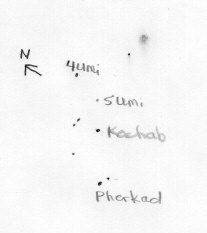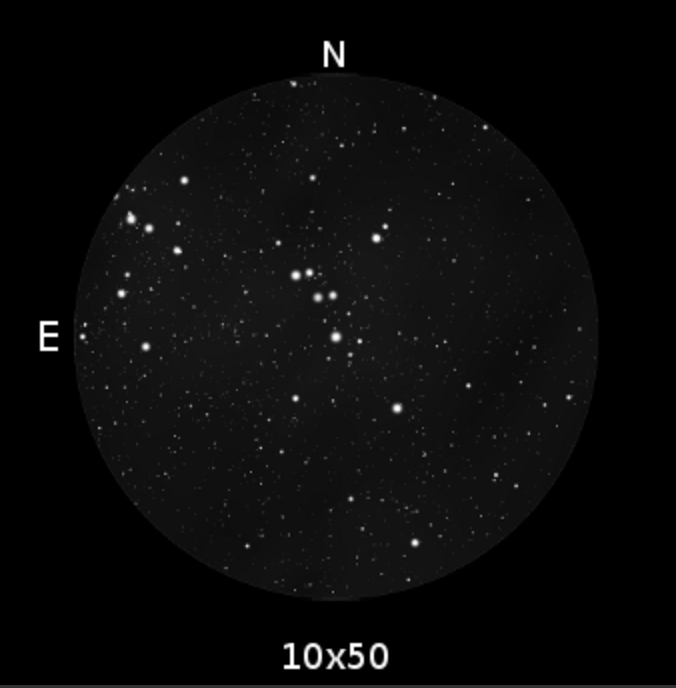Comet: C/2022 E3 (ZTF)
Constellations: Auriga, Canis Major, Canis Minor, Cassiopeia, Gemini, Orion, Taurus, Ursa Major, Ursa Minor
Messier Objects: M35 (in Gemini), M36 & M38 (in Auriga), M45 (Pleiades)
Asterisms: Leaping Minnow (in Auriga), Winter Circle
Location: Home
Date: 2023-01-27
Time: 11:30 PM - 11:55 PM ADT
Instrument: Visual + Binocular 10x42 IS
Transparency: Average (3)
Seeing: Average (3)
Temperature: 7˚ C
SQM: 19.56 - 19.58
Windless and no clouds.
The promise of a clear night was realized and Jerry was already taking time-lapse of the Comet. So, with clipboard, paper and pencils, red light to clip to the clipboard for seeing what I sketched (thanks, Melody), and my binoculars, I headed out to join him in our back yard.
First thing that came into view the moment I opened our back door was Orion, high in the sky above our tree line and its bright stars very evident in the dark skies. With Orion so high, I looked for the full Winter Circle - found! Turned about 45˚ to locate Cassiopeia, Ursa Major and Ursa Minor. The latter constellation was the one of primary interest given the comet wasn't too far away from Kochab. The only stars I could see in the Little Dipper were Pherkad, Kochab and Polaris (mag 2.0); with averted vision, I could see (imagined I saw?) Urodelus and Yildum in the handle and the other two stars of the dipper (Anwar al Farkadain, Alifa al Frakadain) - but they were very faint.
Using my 10x42 IS binoculars, I located Pherkad (mag 3.0) and Kochab (mag 2.0), noting 11 UMi (mag 5.0) next to Pherkad and HD133086 (mag 6.8) and TT UMi (mag 6.9) next to Kochab. With Kochab in my FOV, I had to go up just bit and to my right (east) to find it. A fuzzy cottontail, no tail with this equipment could be discerned. I then used my garden planting table as my easel to sketch it.
|
Using my 10x42 IS binoculars, I located Pherkad (mag 3.0) and Kochab (mag 2.0), noting 11 UMi (mag 5.0) next to Pherkad and HD133086 (mag 6.8) and TT UMi (mag 6.9) next to Kochab. With Kochab in my FOV, I had to go up just bit and to my right (east) to find it. A fuzzy cottontail, no tail with this equipment could be discerned. I then used my garden planting table as my easel to sketch it. It was then that I turned my attention to other sights. First was the 5 stars of Cassiopeia above our greenhouse. I thought, "Perfect! I can easily find Andromeda." Wrong (and disappointing)! Andromeda was lower than thought and lost in the light pollution of our neighbour's backyard light that can be obscured by our shed and greenhouse if you stand in the right spot. |
 |
|

|
Oh, well, Auriga is high and I can see it's bright 5 stars, especially Capella. Up with the binoculars to find the asterism Leaping Minnow. Several stars within Auriga comprise the asterism - 19 Air beside 18 Aur, 17 Aur beside IQ Aur, 16 Aur beside HD 34201, and 14 Aur. All in close proximity. Also close by and located with only a slight adjustment in declination of the binoculars were M38 (Starfish Cluster) and M36 (Pinwheel Cluster). Did not search for M37, nor did I sketch any of the objects just seen. I looked up again at Orion with binoculars to M42. I could see the nebulosity around its four stars but could not discern the two stars within θ1 Orionis and θ2 Orionis as I had January 11 using my 10" Meade SCT. |
I then turned 90˚ to the East to see Leo advancing high above the neighbour's roof. Denebola and Regulus as always stood out but I could also readily identify Zosma and Chertan in his hind end and the other "sickle" stars above Regulus (η Leo, Algieba, Adhafera, Ras Elased Borealis, Ras Elased Australis). I tried to find the galaxies below his belly but to no avail.
Getting late and fingers freezing, I called it a night. Hot chocolate, here I come!